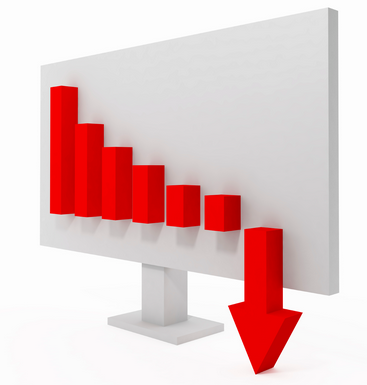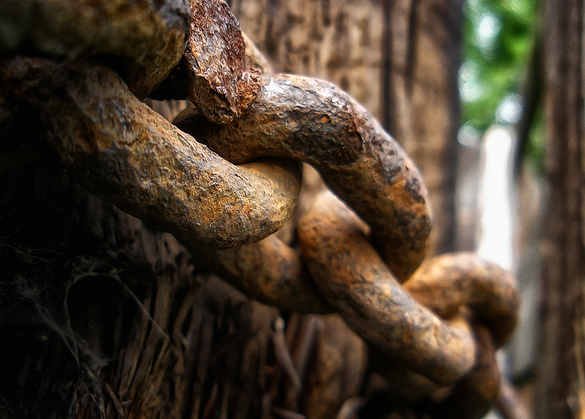Negative SEO Protection Guide

Search engine optimization is extremely important, but there is one thing that can drive your website out of the top search results even if your store is fully optimised. As you might have guessed, it is a negative SEO. There are several techniques used by unfair competitors, but you always have a remedy from these diseases. In the following post, we will describe the most common ways your foes can attack you. In addition, you will find out how to prevent your e-commerce (or another) website from negative SEO attack. There are also a few advices on how to detect the problem and fix it.

Google doesn’t do much to fix the problem, so you’ll have to do everything yourself or rely on SEO optimization companies (if they are able to help you). In both cases this negative SEO protection guide will be useful, since it help understand the problem. So what is negative SEO?
In the beginning of search engines era, rankings were tightly connected with the number of links pointing to a website. Their quality or relevance were not important. As a result, thousands of spam content links appeared. More and more companies tried to improve their rankings with the help of unfair search engine optimization techniques. That’s why Google changed its algorithm ranking formula by creating the Penguin update and got the ability to detect and penalize websites with spammy links. It was the perfect solution of one problem, but at the same time became the reason for another one – the negative SEO.
As you can see, it is a set of the unfair search engine optimizations aimed at a victim. The most common technique is when someone builds thousands of links pointed at a competitors’ website. Google and other search engines concern bad backlinks as an attempt to artificially increase rankings. All these links are usually anchored within spam, thin content, of other trash. This maximizes the harm from the negative SEO attack. As a result, the target site gets a penalty. But what happens to the villains?
Unfortunately, they are hard to detect. Unfair competitors are neither the target nor the owners of the linking domains. That’s why it is almost impossible to find the instigators.
According to Google, bad links cause much more damages if they pass value than they do by harming a site. That’s the main reason negative SEO still works.
Besides bad backlinks, negative SEO consists of the following tactics:
-
Unbalanced link ratio – more than 50% of backlinks to your website are keywords;
-
Penalty redirections – someone redirects a penalized site to yours;
-
Content scraping – your unique high quality content is posted on various websites;
-
Good links cancelation – good backlinks to your website are removed;
-
Bad reputation – better rankings for wrong keywords, such as “the worst e-commerce website;”
-
Click-through attacks – a bot clicks on search results except for the target site, creating a false SERP bounce rate.
-
Server sabotage – loading large images, heavy crawling, DDoS attacks.
Negative SEO is mostly dangerous for two types of websites: ones without any reputation (recently launched) and with a reputation spoiled by using black hat SEO techniques. Why is it so?
Since Google’s protection against negative SEO campaigns is based on a trustrank, every website can gain trust within the system. This ability even protects from content scrapers, which steal and backdate your content. Unfortunately, new players just don’t have enough time to build up trust. In their turn sites with a bad reputation already lost the protection.
We saw a dramatic increase in negative SEO throughout 2014. In 2015, it is still rising. Negative SEO not only damages websites and companies but also provides a bad impact on the overall quality of the search engine experience. Luckily, you can easily protect yourself from this threat even without any help from search engine optimization consultants. Check the below advices to meet a situation head-on.
Table of contents
- 9 Easy Steps to Protect Your Website Against Negative SEO Services
- 1. Set up Email Alerts in Google Webmaster Tools
- 2. Always Check Your Backlink Profile
- 3. Secure Precious Backlinks
- 4. Protect Yourself from Hackers and Malware
- 5. Take Care of Duplicate Content
- 6. Monitor Your Mentions in Social Media
- 7. Check The Speed & Performance of Your Site
- 8. Don’t Sacrifice Website to Your SEO Strategy
- 9. Don’t Make Enemies Online and IRL
- Additional tips and tricks
- How to Understand that You Are under Attack
- 5 Effective Actions to Combat Negative SEO
- 1. Create a List of Harmful Backlinks
- 2. Get Rid of Bad Links
- 3. Utilize a Disavow Tool
- 4. Speak to the Villain
- 5. Always Be Ready for a Fight
- Negative SEO and E-Commerce Websites
9 Easy Steps to Protect Your Website Against Negative SEO Services
-
Set up Email Alerts in Google Webmaster Tools
-
Always Check Your Backlink Profile
-
Secure Precious Backlinks
-
Protect Yourself from Hackers and Malware
-
Take Care of Duplicate Content
-
Monitor Your Mentions in Social Media
-
Check The Speed & Performance of Your Site
-
Don’t Sacrifice Your Website to Your SEO Strategy
-
Don’t Make Enemies Both Online and IRL.
1. Set up Email Alerts in Google Webmaster Tools
You can receive email alerts from Google if your site is attacked by malware; pages aren’t indexed; server connectivity problems occur; or Google sends you a penalty. To connect your website to Google Webmaster Tools, you have to:
- First of all you have to log into your account.
- Then you should choose “Webmaster Tools Preferences”.
- Another action is about enabling email notifications.
- Note, that you should choose the option, which provides you with the ability to receive alerts for all types of issues.
- And finally it is time to click “Save.”
Now you will be notified in a case of new threats, but it is just the beginning – more useful actions are described below.
2. Always Check Your Backlink Profile
You should always know, who creates links and redirects to your website, and what is the quality of this content. Use Open Site Explorer, Ahrefs, MonitorBacklinks.com or other services to check if someone is building links to your site. You can even set some of these tools to send notifications on your email when a new backlink to your site appears (below you will find our small guide to backlink audit).

3. Secure Precious Backlinks
Sometimes negative SEO adepts try to remove best backlinks. Someone uses your name to ask link owner to remove the backlink to your website.
Luckily, there are two simple but effective tips to prevent this: use an email address with your domain instead of Gmail or other third party service; create a list of your best backlinks and always monitor them (you can use the aforementioned MonitorBacklinks.com to do this).
4. Protect Yourself from Hackers and Malware
Security is always extremely important especially if you are going to protect your website from negative SEO. You can use two factor authentication within your website (if possible). It is also extremely important to create strong passwords. Additionally, you should take care of regular backups. And don’t forget about firewalls and antivirus software. If you are using Magento, check our ultimate security guide.

5. Take Care of Duplicate Content
Duplicate content is also used as one of negative SEO techniques. Malefactors copy content from your website and post it wherever they can. Chances are, your website will be penalized. And you don’t want to lose rankings, right?
Ok, then you should take care of duplicated content with the help of Copyscape.com or other similar services. Add your website’s URL to verify if someone uses your content without permission.
6. Monitor Your Mentions in Social Media
Social media can be also used in negative SEO campaign. It is extremely easy to create a new account in a social network using the name of your company or website. Use Mention.net or other solution to find fake profiles and report them as spam.

7. Check The Speed & Performance of Your Site
If your website loads to long, make sure someone is not sending thousands of requests to your server. Chances are, hackers are going to put it down. With the help of Pingdom.com, you will be always able to prevent this attack by monitor your server.
8. Don’t Sacrifice Website to Your SEO Strategy
Did you know, that search engine marketing optimization can be harmful? You can accidentally use techniques that are prohibited by Google. Therefore, you hurt your website rankings. We recommend you:
- not to link to penalized website;
- to avoid publishing low quality guest posts;
- to forget about buying links for SEO;
- to use your website name in more than a half of backlinks;
- to sell links on your website with “nofollow” attribute.
9. Don’t Make Enemies Online and IRL
People usually use negative SEO to outrank competition in search engines, but there are situations, when they rely on this set of techniques for revenge or just for fun. Considering this, try not to make enemies.
You should always be polite with your clients, because you will newer know, who they are, and how they can influence your online business.
Additional tips and tricks
- Work with Google Authorship – provide your search results with authenticity.
- Utilize the rel=canonical tag – you will improve ranking signals in multiple URL structures.
- Update your sitemap – let Google crawl your website seamlessly.
- Never use a negative SEO campaign against others!
- Create a perfect reputation – it is the best protection against negative SEO campaign.
How to Understand that You Are under Attack
The below indications shows that your website is under a negative SEO attack:
- Organic traffic has been significantly changed;
- There is a drop in high ranking key terms;
- Suspicious links to your website appeared;
- There is a direct extortion email in your mailbox.

5 Effective Actions to Combat Negative SEO
You can easily combat negative SEO attack against your website with the help of the following actions:
1. Create a List of Harmful Backlinks
Use the aforemetioned MonitorBacklinks.com to create a list of harmful backlinks. The following advices will help you audit your backlinks:
- Check if sites with backlinks are indexed in Google. It is very important, since unindexed websites are often penalized. If these sites are penalized, add them to the list of bad backlinks.
- Use Link Detox or other similar tool to to identify links from virus infected sites or sites with malware.
- Also use a PageRank to find paid links and add them to the list of bad links. These are probably the high PR links, but you have to double-check manually – it’s always easy to understand what link is organic and what is purchased.
- Congratulations! You have a spreadsheet with the most harmful backlinks.

2. Get Rid of Bad Links
Now, when you have a list of harmful backlinks, you can ask webmasters of websites with these bad links to remove them. Use Whois.com to find contact email addresses. You can even check who is hosting these websites with the help of WhoIsHostingThis.com. Sometimes, contacting hosting providers will be more effective.
3. Utilize a Disavow Tool
In a case you’ve already received a manual penalty, there is a Google Disavow Tool. Create a disavow list and submit it to Google.
4. Speak to the Villain
If you know, who is responsible for the negative SEO campaign aimed at your website, then you can connect with this organisation or individual. If that doesn’t work, use social media to create buzz around your problem – you might get the necessary defense.
5. Always Be Ready for a Fight
Make your website ready for the negative SEO attack. You just have to follow the above advices.
Negative SEO and E-Commerce Websites
The following information is extremely important for e-commerce merchants. Below we explain the common scheme of negative SEO attack on e-commerce store. It involves 4 participants:
- Victim – the attacked website;
- Infected host – a randomly hacked website;
- Intermediate host – another hacked website;
- Scam site.
Hackers set up a realistic e-commerce store under the particular brand. They know two things: 1) there is a store under that brand , and 2) users perform a lot of appropriate brand keyword queries on Google. Hackers scrape and recreates the victim website ( is used). They also create redirects to their own scam websites. Let’s see how this scheme looks in practice.
Victim (an e-commerce site) sells clothes from Stone Island among other goods. Hackers create a scam website that uses the aforementioned brand name in store’s URL. For example, stoneislandsshops.com.
They also hack some websites that are used as cloaking hosts. These hacked websites will be indexed by googlebot.
In its turn victim is scraped in order to recreate content on a cloaking website including all the branded keywords.
Now it’s time for googlebot to indexes cloaked website. At the same time, other user-agents are redirected from this site.
When user performs query related to a victim e-commerce site, Google shows a scam website high in SERP.
To protect your ecommerce website from this kind of threat, you should regularly check your backlinks with the help of Google Webmasters Tools (Google Search Console). If your store is under the attack, use Disavow Tool to exclude harmful backlinks, and send a report to webspam team with the help of Google’s Webspam report form.

That’s all we want to tell you about negative SEO. Check this guide for search engine optimization tips. You can also get more information on link building strategies here.









